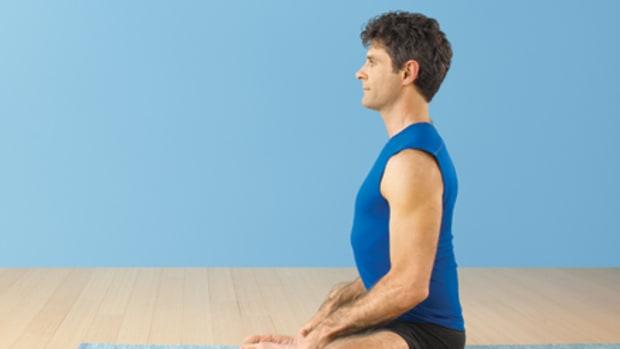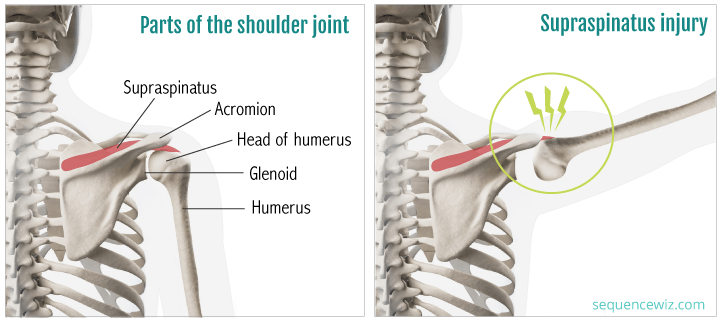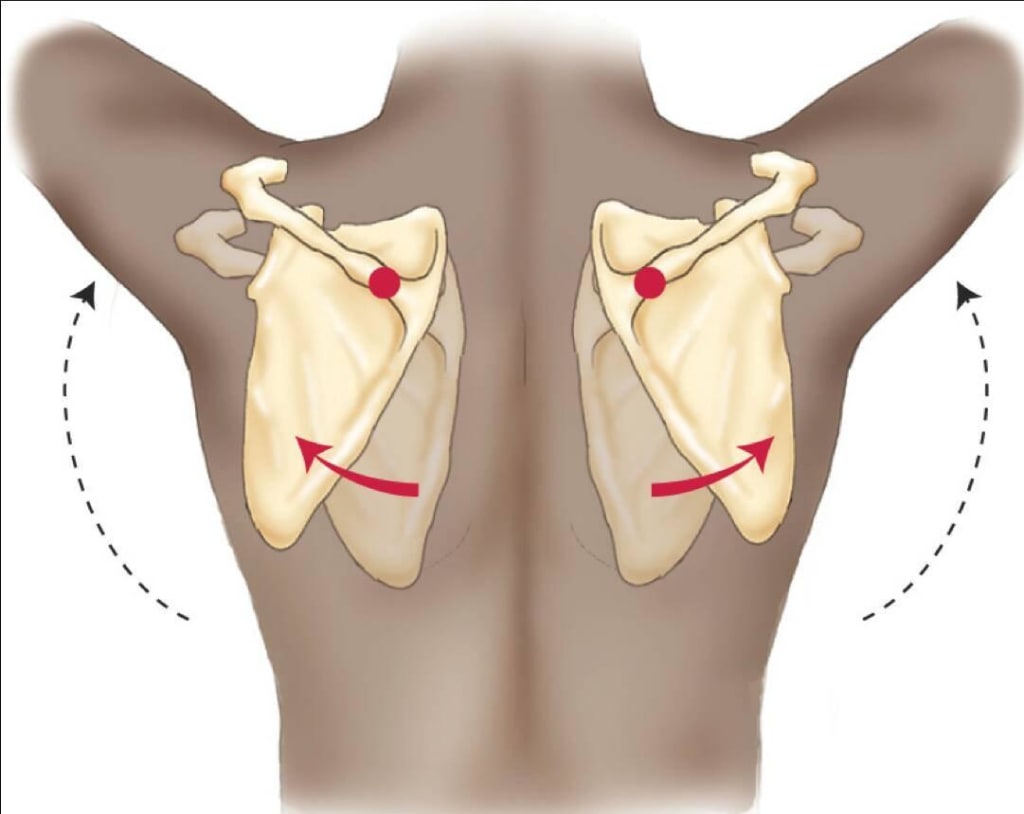Getting your upper back involved in backbends (last week’s theme) is a challenging adjustment for many. However, like any directional adjustment, it IS possible to take even this important adjustment too far. When we do that, we collapse the back ribs and reduce spaciousness in the back body even as we create more space in the front. This week we will learn how to keep the back body spacious while opening the front of the chest. I call this technique, which I learned from Richard Freeman, “spreading your wings”.
Look at me, I am not slouching!
The phenomenon of the back ribs collapsing to open the front of the ribcage is easy to observe in seated pose. In most yoga classes, the majority of people will sit in a slight to severe forward slump, collapsing their chests. However, there are usually a couple of people who have figured out how to “fix” the slump. They over-contract the middle back muscles to keep the front of the ribcage lifted. (I used to be one of these people.) The problem is that over-engaging the back muscles to fix the slump collapses the back ribs. It’s a clear case of robbing Peter to pay Paul. This week I want to focus on how to engage the middle back without causing it to collapse.

Over-contracting the back muscles to avoid the slouch is like robbing Peter to pay Paul. It doesn’t actually free the breath. This photo was intended to illustrate how to sit well. Sadly, it doesn’t. To their credit, Yoga Journal have removed this photo from their website. PS: I used to sit like that, too. (Source: yogajournal.com)
The analogy I use is spreading your wings. Think of your lower shoulder blades and your lower back ribs as your wings. If you have been trying hard to fix your slump, it may be very difficult to find this action of spreading your wings. This is so because it might feel quite “wrong”, as if it were taking you straight back into the slump. But you do not have to collapse the front in order to open the back, and vice versa. One instruction for opening the front of the rib cage while also opening the back is to “direct your inhales into your front ribs, side ribs, AND back ribs simultaneously (or sequentially).”
However, some people find that very challenging, having gotten so invested in contracting the middle back to avoid slouching. One relatively easy place to learn this forgotten movement of spreading the back ribs is in Child Pose.
Learn to spread your wings in Child Pose
Come into Child with the thighs parallel. (If you want to emphasize relaxation in Child, I advocate widening your knees. However, for this particular experiment it is helpful to have the thighs parallel). Relax into the pose, and observe where your inhales go. If they don’t automatically inflate your back ribs, try inhaling quite deeply until you start feeling your back ribs expand with each in-breath. If your hips’ and knees’ range of motion is limited enough that your thighs don’t touch your belly in Child Pose, you can learn how to breathe into the back ribs by lying on your belly to limit the expansion of the front body.
Then refine the action. Inflating your ribs straight back can round the back and collapse the front of the chest. Instead, notice whether you can expand your back ribs and lower shoulder blades sideways, in an action that should feel like spreading wings. If you can place your hand on your side ribs, that may help you bring your awareness to the right part of your body. Breathe into your hands as if you were trying to inflate a balloon. If you can’t get your hands onto your side ribs, you can ask someone else to place their hands there. When you have figured out how to access this sideways action, you will find that you can expand your back body without collapsing the front. If you still can’t feel the action in the back body, note that this movement can’t be forced.
Spreading your wings is not so much the result of muscle contraction, as it is the result of your middle back muscles relaxing. If you believe that movement is the result of muscle contraction, this statement will seem very strange indeed. But the bio-mechanical reality is that movement is the result of some muscles contracting and others relaxing. Learning to relax into a movement is a powerful lesson because you are learning to make your movements more efficient and more enjoyable. As you stop fighting reality, you also learn to become more present in the here and now.
Now challenge yourself
The action of spreading your wings becomes particularly important in poses with the arms raised overhead. Arms overhead tends to collapse the back, as tight latissimus dorsi muscles pull the middle back into a backbend to avoid the lats stretch. Once you have felt the action of spreading your wings in Child Pose, repeat it in Hasta Tadasana (standing pose with your arms raised overhead). Take a couple of moments after raising your arms to feel the “banana back” that results. Then simply and gently spread your wings sideways and feel your back body become more spacious while the front body remains open.
For a true challenge, try this action in Handstand. Do this at the wall even if you can already balance in Handstand. Engaging this action will probably mess with your balance as it shifts your center of gravity. If you can balance in Handstand in the middle of the room but with a banana back, you will be unwilling to make this important adjustment because it causes you to lose your balance, and most people’s ego values balancing more than being spacious and neutrally aligned.
Spreading your wings is good for your shoulders
Spreading your wings creates more space in your ribcage and thus frees your breath. But it also keeps your shoulders safe in poses where the arms are raised overhead. Most people lift their arms by pulling their shoulder blades up, because it allows them to reach farther. However, lifting your arms this way you risk a repetitive strain injury to one of your rotator cuff tendons, the supraspinatus tendon. Lifting your arms by pulling your shoulder blades up does not allow you to maintain the space between the head of your arm bone (the humerus) and the acromion (a protrusion on your shoulder blade that sits above the shoulder joint). The supraspinatus tendon runs through that space and can get pinched if there isn’t enough space. Each pinching can create a tiny injury, which added over time can accumulate into quite a serious one.

Lifting your arms without spreading your wings can pinch your supraspinatus tendon. (Source: sequencewiz.com)
How to solve this problem? Pulling the shoulder blades down the back, which is a common instruction, actually makes the pinching worse. That is so because you are now actively pulling the bones into each other. The real solution is to allow the bottom tips of your shoulder blades to rotate outward and upward, away from the spine, when you lift your arms. This rotation of the shoulder blades maintains the space between the acromion and the head of the arm bone because the acromion pivots away from the lifting shaft of the arm bone. How do you get the bottom tips of your shoulder blades to rotate outward and upward? Spreading your wings is the best way I know to initiate this movement.

Upward rotation of the shoulder blades is the most effective way to reduce pinching of the supraspinatus tendons. (Source: unknown)
Spread your wings to lose the pinch
Raise your arms overhead again in Tadasana, and then spread your wings, observing whether that action reduces pinching in the back of your shoulder joints, and increases spaciousness in the back of your neck. This action should feel great! For the last exercise, try spreading your wings to initiate the action of lifting your arms overhead, rather than as an afterthought. As you begin to inhale, direct the breath into the front ribs and collar bones to externally rotate your arms. Then allow the second half of your inhale to spread your wings, and notice how your arms lift out and up through the action of the spreading of your wings almost effortlessly. Savor the spaciousness, the ease, and the sense of relaxed power that results.
Now try spreading your wings in Downward-facing Dog Pose. Here the arms are also overhead, contributing to the common collapsing of the upper back. Gravity is exacerbating this tendency here by pulling you deeper into a backbend in the upper back, making spreading your wings particularly transformative, spacious, and satisfying. Return to your default Down Dog, and notice whether there is any pinching in the back of the shoulder joints. Spread your wings again and notice whether that pinching disappears.
Spreading your wings revolutionizes deep backbends
The action of spreading your wings also benefits deep backbends. Deep backbends expand the front of the torso so much that it actually gets difficult to breathe by expanding the front of the torso, which is how most of us breathe. If the front of the torso is maximally expanded, you can’t expand it anymore to take an inhale. However, you *can* increase your lung volume by expanding the back ribs, and if you expand them sideways, it won’t reduce the backbend.






Leave A Comment